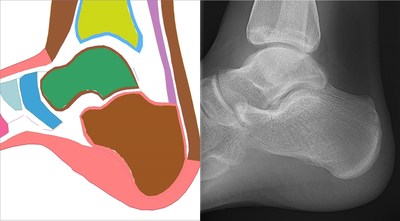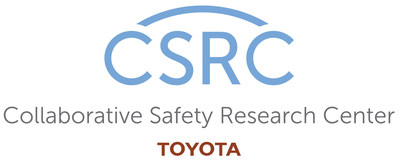Toyota's Collaborative Safety Research Center Adds Four New Projects to Latest Five-Year Research Phase
Toyota's Collaborative Safety Research Center (CSRC) has announced the addition of four new research projects aimed at enhancing automotive safety. This initiative is part of a five-year, $30 million commitment focused on understanding human driving behavior and implementing technologies to prevent impaired driving. The projects will be conducted in collaboration with several esteemed universities, including the University of Virginia and the University of Michigan Medical School. CSRC has invested $85 million in safety research since its inception, with 98 projects completed and over 260 published papers.
- Investment of $30 million for five years into automotive safety research.
- Addition of four new projects enhancing understanding of driver behavior and safety technology.
- Collaboration with renowned universities for comprehensive safety studies.
- CSRC's previous investment of $85 million supporting foundational safety research.
- Completion of 98 projects with significant contributions to automotive safety advancements.
- None.
Research will explore the diverse safety needs of the evolving mobility ecosystem by further engaging projects with expertise of nationally recognized universities: University of Virginia, University of Michigan Medical School, University of California San Diego, University of Nebraska Medical Center, Iowa State University and University of Wisconsin-Madison
ANN ARBOR, Mich., Aug. 23, 2022 /PRNewswire/ -- Toyota's Collaborative Safety Research Center (CSRC) today announced four additional research projects are being added to the next phase of its pioneering automotive safety research. The projects include a study of human diversity in injury biomechanics, a look at technologies that can help prevent impaired drivers from endangering themselves or others, how to help predict when a driver is at risk of incapacitation or illness before it becomes an emergency and how to more effectively pass the operation of the vehicle between the driver and automation. These new projects join the nine announced in April as part of a five-year,
"As we continue to pursue the needs of industry around automotive safety, these new projects will help us better understand human driving behavior, ways to integrate medical technology and crash protection for a diverse population of physical characteristics," said Danil Prokhorov, director of Toyota's CSRC and Future Research Department (FRD).
CSRC will continue to collaborate with the University of Virginia, University of Michigan Medical School, University of California San Diego, University of Nebraska Medical Center, Iowa State University and University of Wisconsin-Madison through these new projects. Safety improvements found in these projects will be publicly available to help push safety forward industrywide.
The four projects include:
Project Title | Topic | Institution |
Biomechanical factors for ankle injury considering population diversity and equity | Why have crash injury differences been reported between males and females, particularly to the ankle? Researchers will use a combination of computer modeling with the THUMS, tissue experiments and medical imaging data to investigate ankle injury mechanisms and differences across population groups, especially biological sex. | University of Virginia |
Assessing driver alcohol and drug impairment using driver monitor systems | What technologies can help prevent impaired drivers from endangering themselves and others? Researchers will recruit and evaluate volunteers in a simulator to test the feasibility of using existing in-vehicle technologies for detecting driving impairment due to alcohol and cannabis in a controlled setting. | University of California San Diego |
Investigation of mechanisms leading to sudden medical emergencies | What clues can help predict a driver's incapacitation and illness before it becomes an emergency? Researchers will use hospital and naturalistic driving data to investigate physiologic and behavioral signatures that may indicate impending sudden medical emergencies in order to enhance options for early intervention. | University of Michigan Medical School |
Effectiveness of driver management systems for driver attention | How can vehicle interfaces enhance a driver's engagement in the driving task as automation capability advances? Researchers will use a driving simulator to evaluate driver management technologies and develop tools to enhance cooperation between human drivers and automated driving systems. | University of Wisconsin - Madison |
Projects are identified based on their application to CSRC's proposed research tracks for the next five-year period – Human-Centric, Safety Assurance and Assessment – which weave together the diverse interdisciplinary backgrounds of CSRC's team.
On top of the multi-year projects announced today and in April, CSRC has announced its pursuit of smaller research investigations to explore potential new topics and collaborator relationships. The investigations enable CSRC to explore contributions to current and emerging safety issues for future project planning. The investigation topics include differences in risky driving behavior across cultures, relationships between child passengers and crash trends and differences in safety perceptions across socioeconomic groups. By working with researchers on these topics early on, CSRC is laying the foundation for future breakthroughs in these and other areas of growing importance. CSRC welcomes continued scientific discussion on these and other potential topics for early investigations.
Toyota created the Collaborative Safety Research Center (CSRC) in 2011 to advance traffic safety for the industry and society through open partnerships with universities, hospitals and other institutions. From 2011-2022, CSRC has received
Including ongoing work, CSRC has undertaken 98 research projects with more than 30 different institutions, published over 260 research papers and engaged more than 300 researchers, who have publicly shared the output globally. The projects have made meaningful contributions to help advance research and technology for the safe integration of future mobility solutions for all.
About Toyota
Toyota (NYSE:TM) has been a part of the cultural fabric in North America for more than 60 years, and is committed to advancing sustainable, next-generation mobility through our Toyota and Lexus brands, plus our more than 1,800 dealerships.
Toyota directly employs more than 48,000 people in North America who have contributed to the design, engineering, and assembly of nearly 43 million cars and trucks at our 13 manufacturing plants. By 2025, Toyota's 14th plant in North Carolina will begin to manufacture automotive batteries for electrified vehicles. With more electrified vehicles on the road than any other automaker, more than a quarter of the company's 2021 North American sales were electrified.
Through the Start Your Impossible campaign, Toyota highlights the way it partners with community, civic, academic and governmental organizations to address our society's most pressing mobility challenges. We believe that when people are free to move, anything is possible. For more information about Toyota, visit www.ToyotaNewsroom.com.
Media Contact:
Olivia Boisineau
olivia.boisineau@toyota.com
![]() View original content to download multimedia:https://www.prnewswire.com/news-releases/toyotas-collaborative-safety-research-center-adds-four-new-projects-to-latest-five-year-research-phase-301610988.html
View original content to download multimedia:https://www.prnewswire.com/news-releases/toyotas-collaborative-safety-research-center-adds-four-new-projects-to-latest-five-year-research-phase-301610988.html
SOURCE Toyota Motor North America
FAQ
What new projects has Toyota announced for its Collaborative Safety Research Center (TM)?
How much investment is Toyota making into automotive safety research (TM)?
Which universities are collaborating with Toyota on its new safety research projects (TM)?









